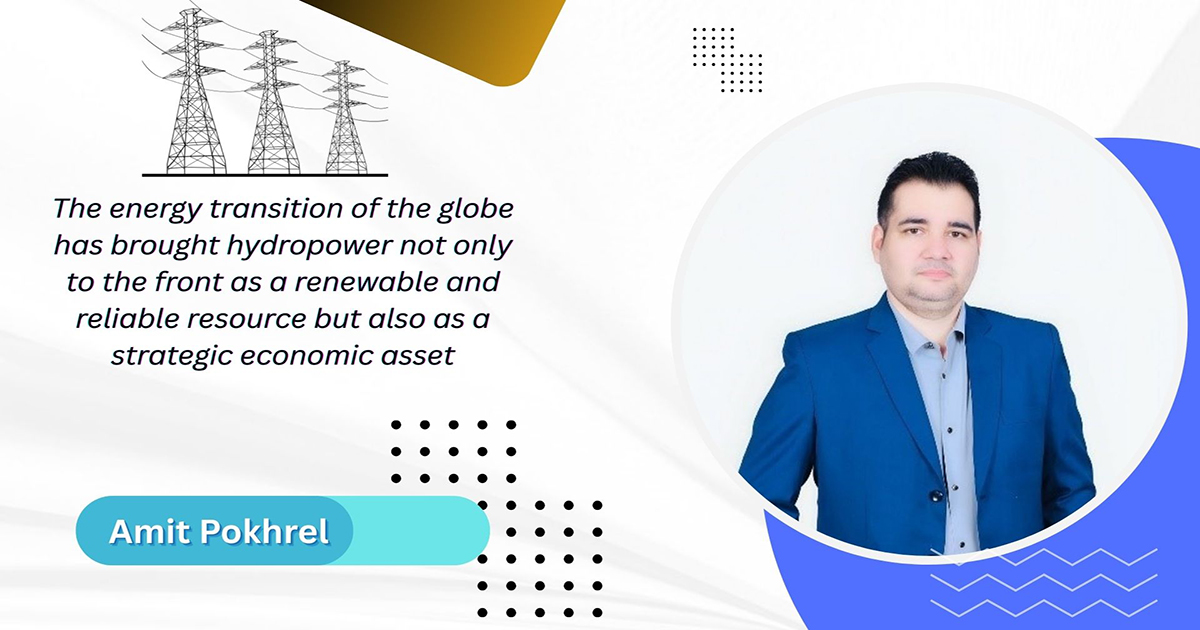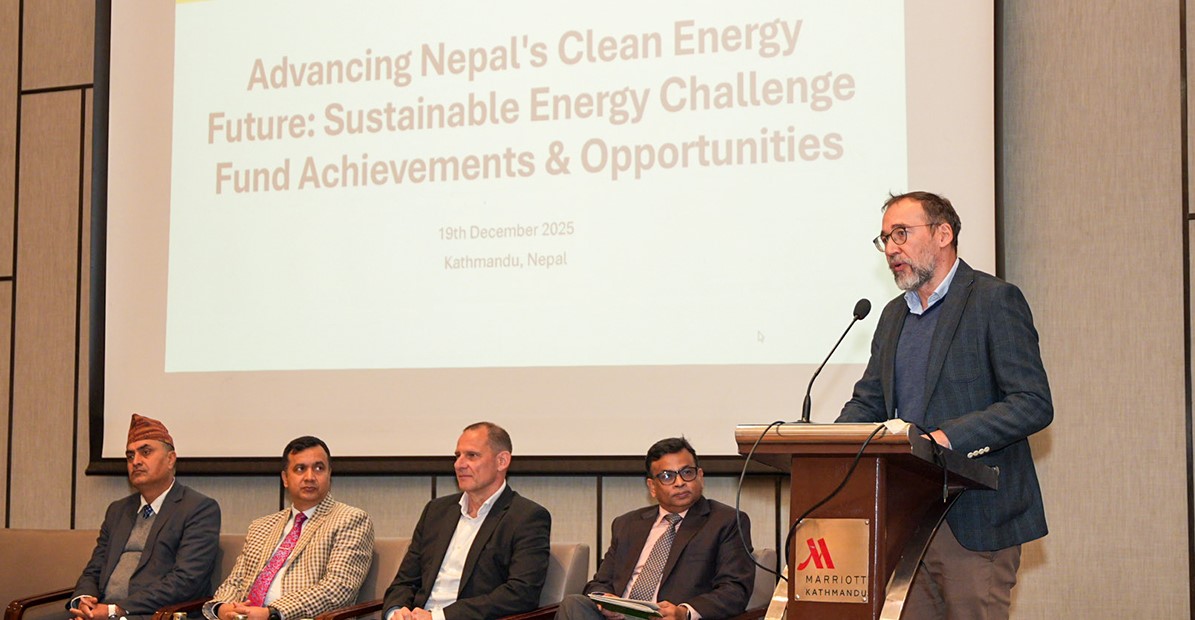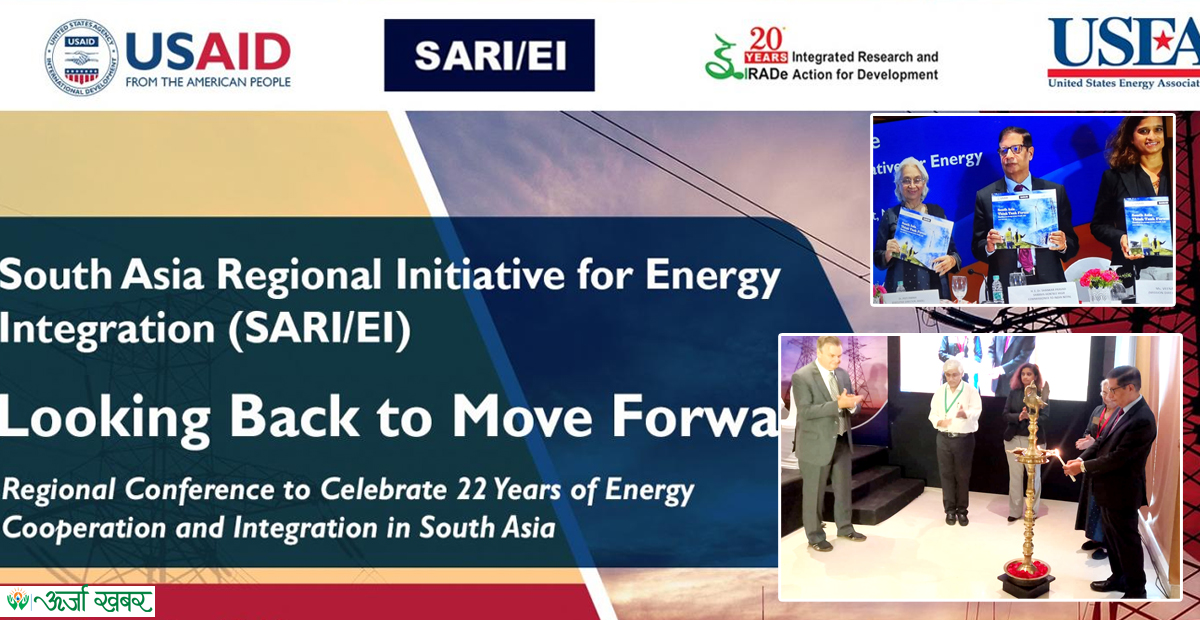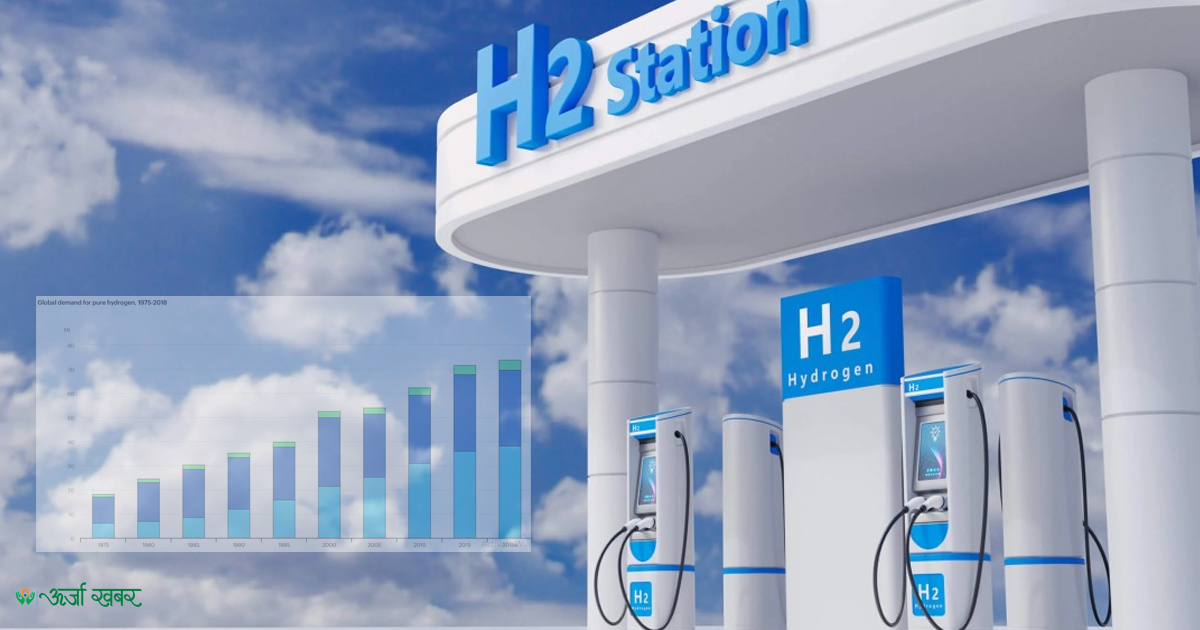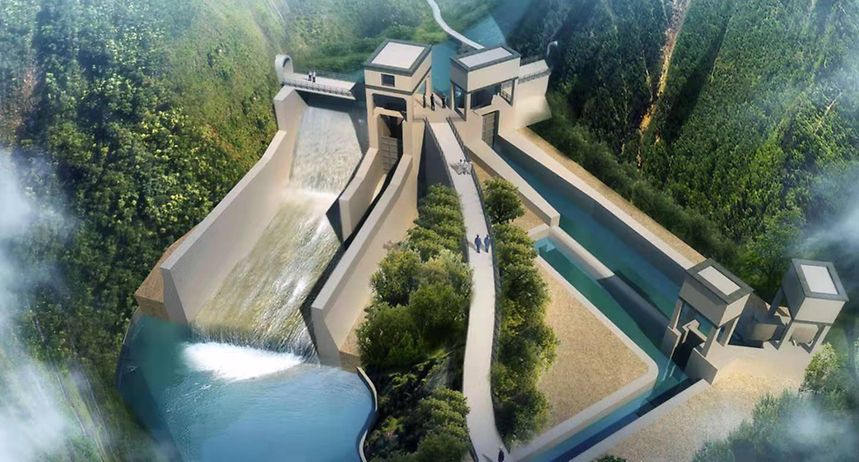Energy Update
Upper Trishuli-1: A game-changer hydro project that will add Rs 80 billion to the state coffer
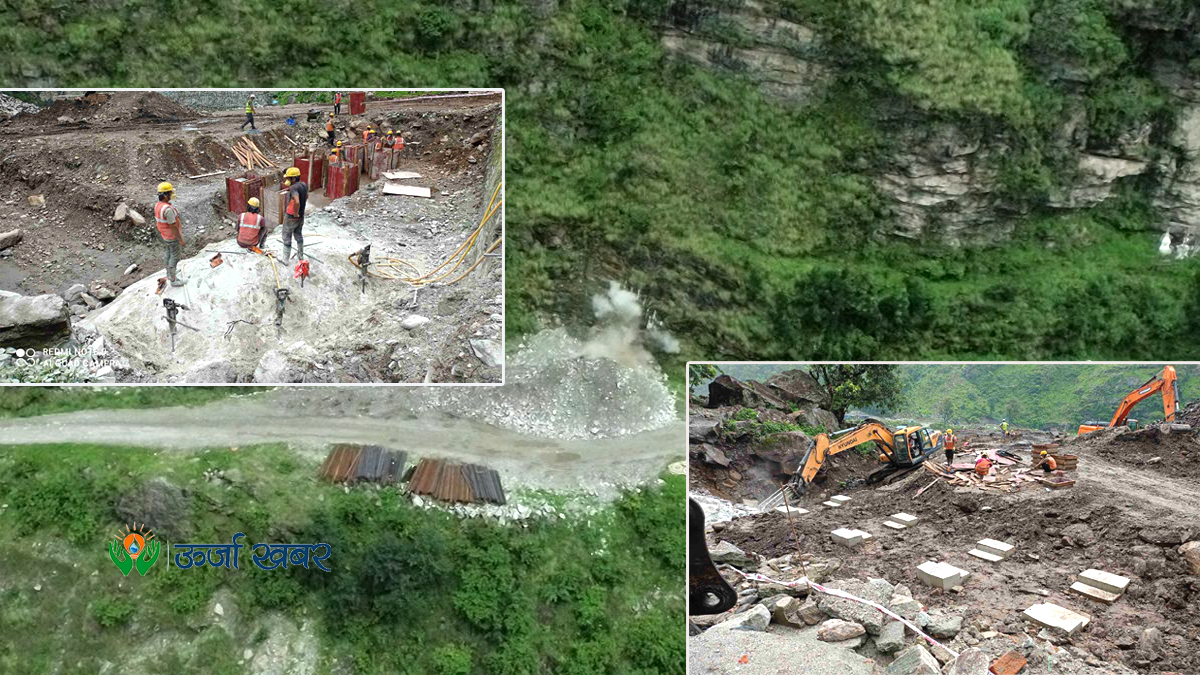
Kathmandu; Construction of the 216 MW Upper Trishuli-1 Hydropower Project, a Korean government invested project, is now in full swing. The project, which is a major foreign direct investment (FDI) project is Nepal, had acquired production license almost four years before.
The project, which has 90 percent Korean investment and 10 percent of Nepal, formally civil construction on August 17, 2021 (3 years, 9 months and 9 days after receiving the production license). Its promoter, Nepal Water and Energy Development Company Limited (NWEDC), had received the production license from the Department of Power Development on November 9, 2017.

It took about five years for NWDC to study the project before getting the license. Delays in signing power purchase agreements (PPAs) and project development agreements (PDAs), procedural hassles and facing the writ filed at the Commission for Investigation of Abuse of Authority (CIAA) were the major setbacks that delayed the project.
Now that construction has gained momentum, the basis for completing the project within five years has been laid, said project chief Young Hyun Cho. "We are the official company of the Korean government and the construction must be completed within 5 years. We have no excuses left," he said, adding, "Along with the construction of the project, we should also work to improve the living standards of the local people and we are committed to it."

Informing that completion of the Trisuli-1 project will establish the Korean company in Nepal, Hyun Cho said, "We want to develop more projects in Nepal. This will not only improve relationship between private sectors of the two countries, but will also enhance the economic, political and diplomatic relations between Korea and Nepal."
As the load center near Kathmandu and the annual average energy is good, Trishuli-1 is more attractive than Upper Tamakoshi in some aspects, opined Ganesh Prasad Neupane, deputy chief of the project. "Along with the challenge of completing the project on time, we have a responsibility to improve the living standards of the locals," said Neupane, adding, "We also have an obligation to work on environmental aspects and beyond."
The company, which has been licensed for 35 years, has spent about four years doing the pre-construction work without starting the project construction work. And now the company has 31 years to develop and operate the project. Within this period, the company should pay bank interest, earn profit and transfer ownership of the project to the government.
Earlier, the target was to complete the construction of the project by March 31, 2024. At present, the company is scheduled to complete the construction work October 31, 2026. Production license of the company expires on 2109 BS.
Construction Stage
A 32 meter high dam will be constructed on the Trishuli River in Haku, Rasuwa and water will be brought from the 9.7 km long main tunnel and discharged into the power house. According to the study, water cooling ponds (dessender), surge tanks and power houses will be constructed underground.
At present, construction and upgrading of access road, main entrance tunnel, cable tunnel, main tunnel and other structures have been started.
Establishment of crusher and batching plant at the project site, testing of construction materials, construction of belly bridge on Trishuli river for access road and cutting of trees for construction of dam and other structures, among other works are underway. Construction of the third sub tunnel has started from Gogane Bhir on the bank of Trishuli River. Similarly, excavation of dam site and construction of wall have also been taken forward simultaneously.
The contract for the project, which is being developed under the Engineering, Procurement and Construction (EPC) model, has been awarded to Korean company Doosan Heavy Industries and Construction. Doosan has awarded a subcontract to Chinese company Power China.
Equipment used in the project is planned to be produced and transported from Korea, India and China. It is also mentioned that the Austrian company Adritz Hydro, which has been awarded the contract for hydro and electro-mechanical equipment, will transport 7,300 tons of equipment to the project.
Project Location
The project is being constructed at Rasuwa, 70 km north of Kathmandu. While the project dam will be constructed in Haku, power house will be constructed in Malung. Work is underway to build an underground access road by cutting the cliff at the construction site of the power house. With a gross head (maximum height) of 341 meters, the design discharge of the project is 76 cubic meters per second. Water brought from the 9.7 km long and 6.5 m diameter tunnel will be discharged into the power house at Malung where, 3 units of 72 MW will be connected. The generated electricity is taken out of the 220 KV underground switch yard and connected to the 220 KV tower to be constructed near the power house. From there, a 1.2 km 220 KV transmission line will be constructed and connected to the Upper Trishuli-3 'B' Hub of the Nepal Electricity Authority (NEA).
Employment
At present, more than 265 workers are deployed at the project site. It is estimated that 1.15 million people will get employment throughout the project period. The study has shown that 38,200 workers are required at the project every month.
As per the company, 92 percent local and 8 percent foreign workers will be deployed in the project. Of them, 64 percent will be skilled and experienced and 36 percent will be labor force. It has been mentioned that Rasuwa will be given priority while selecting experienced/skilled employees/manpower for the project development.
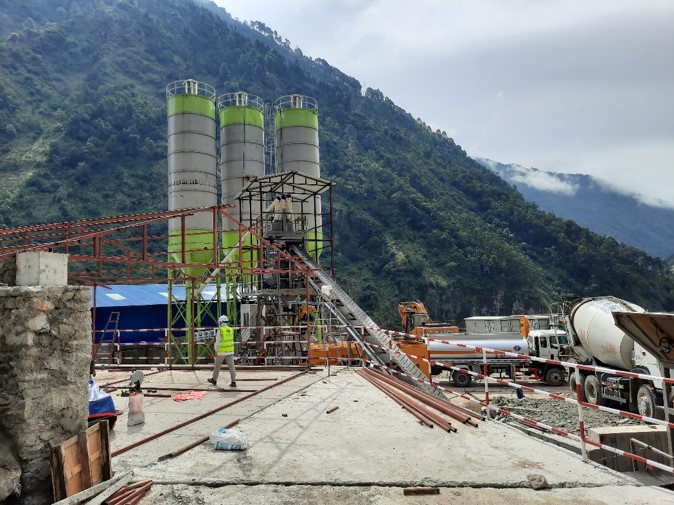
Power Purchase and Energy
A project development agreement (PDA) was signed between the government and the company on December 29, 2016 to construct the project. Similarly, PPA was signed between NEA and the company on January 28, 2018 as per the power purchase agreement. NEA has signed a PPA at Rs 8.40 per unit for six months in winter and Rs 4.80 per unit in rainy season to buy electricity from the project.
The project has inked an agreement to generate 1.45 billion units of electricity annually and sell it to NEA. However, according to the design of the project, 1.63 billion units will be produced annually. Had the project work started as soon as the production license was obtained, the project would have already started generating electricity by today and the project would also have started generating profit. The company has lost about Rs 38.44 billion on the basis of an average electricity sales rate of Rs 6.60 per unit due to four years of delay of the project.
The company has informed that the project will generate 108 MW of electricity (firm energy) even during the dry season of winter. Of the annual energy produced, 38.75 percent will be received in winter and 61.25 percent in rainy season.
As the project has 90 percent foreign and 10 percent Nepali investment, PPA has been signed with provision to pay 80 percent in US dollars to buy electricity. Such provision in PPA has been maintained only for 10 years from the commencement of power generation. After this, that is, after repaying the loan, there is an agreement to pay the purchase price in Nepali currency.
It was rumored from the beginning that signing PPA in US dollars will incur loss to NEA. However, during the PPA, NEA Managing Director Kulman Ghising said that the PPA with the project was in the interest of the country. It is mentioned that the exchange rate of dollar fixed by Nepal Rastra Bank will be kept stable (locked) on the day of PPA. Ghising, therefore, argued that even if the Nepali currency weakens against the dollar, it will not be affected. Moreover, there is an agreement to set up a hedge fund to manage dollar risk. Hedging costs will be borne by the government, the authority and the project promoter. Although the NRB has prepared regulations on hedging, no further work has been done.
Investment Structure
The investment structure in the company (NWEDC) is 70 percent loan (US $ 453.2 million) and 30 percent (194.2 million) equity. As per this, Korea South East Power Company Limited will invest 50 percent, Dalim 15 per cent and Kerung 10 per cent (altogether 75 percent) in the Korean consortium (co-financing). The International Finance Corporation (IFC) under the World Bank has 15 percent investment and the domestic private sector (Bikesh Pradhanang) has 10 percent investment. According to the company, a maximum of 10 percent share has been ensured for the locals affected by the project. Similarly, IFC, Asian Development Bank (ADB), Asian Infrastructure Investment Bank (AIIB), Korean Exim Bank, Korean Development Bank (KDB), Netherlands Development Bank, French Development Bank, British Development Bank and the OPEC Fund for International Development have committed to invest in the project.
Contribution to the Economy
It is estimated that the project will contribute about Rs 80 billion to the national economy during the construction and throughout the operation period (35 years). The state will receive Rs 55.08 billion as royalty at the rate of Rs 200 per kilowatt for 15 years and Rs 1500 per kilowatt for 16 to 30 years from the generation of electricity from the project. Similarly, the government will receive Rs 19.66 billion (as energy royalty) from power generation at 2 percent for 15 years and 15 percent for 16 to 30 years. On the other hand, a total of Rs 4.89 billion will be deposited at the government coffer through income tax at the rate of 10 percent for 11 to 15 years and 20 percent for 16 to 30 years.
Conversation
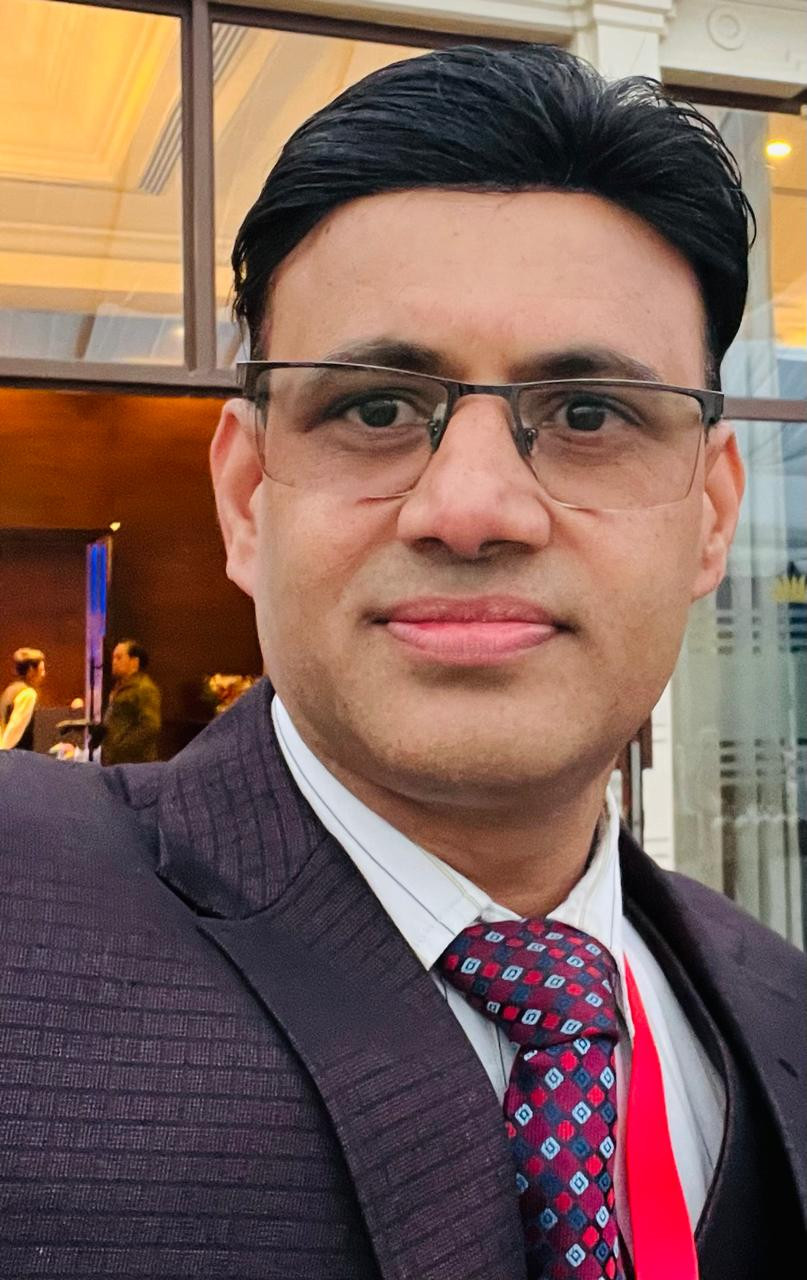
Laxman Biyogi
Laxman Biyogi has been serving as the editor of Urja Khabar for the past seven years.
- Info. Dept. Reg. No. : 254/073/74
- Telephone : +977-1-5321303
- Email : [email protected]





